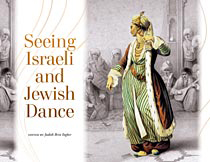Published Writings
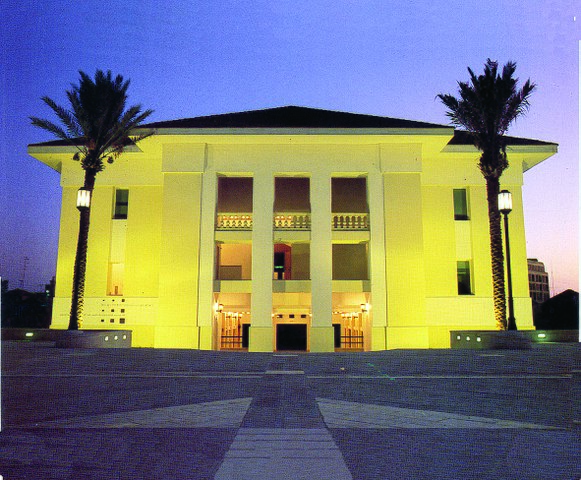
Suzanne Dellal Centre
By Suzannedellal - Own work, CC BY-SA 4.0, https://commons.wikimedia.org/w/index.php?curid=60647037
Typically, international presenters and directors of venues throughout the world are invited to the International Dance Exposure annual dance festival to see Israeli dance ranging in size from solo to large company productions. Brin Ingber’s reviews from different years can be found in blogs, newspapers and magazines in the following issues:
Ingber, Judith Brin. "Competition Unmasked: Suzanne Dellal Centre International Exposure for Dance 2022". Mahol Akhshav [Dance Today] No. 43. Feb. 2023. 63-37 | Read the article
Ingber, Judith Brin. "International Dance Exposure 2020". Mahol Akhshav [Dance Today] No. 39. Mar. 2021. 57-63. accessed February 7, 2021. This review covers the 26th annual festival held virtually, in December, 2020. | Read the article
Ingber, Judith Brin. "Nationalism and Dance: at the 2019 International Dance Exposure". Mahol Akhshav [Dance Today] No. 37. Feb. 2020. 57-63. accessed March 17, 2020. This review covers the 25th annual festival held in December, 2019. | Read the article
Ingber, Judith Brin. "24th International Exposure Festival of Israeli Dance at the Suzanne Dellal Centre for Dance, December 5-9, 2018", in Mahol Akhshav [Dance Today] #35. Accessed March 17, 2020. | Read the article
Ingber, Judith Brin. "Pardon Me but Who Knows One or two or three?". Review of International Dance Exposure Festival, Suzanne Dellal Centre for Dance, Tel Aviv, 2016.Accessed March 17, 2020 | Read the article.
Ingber, Judith Brin. "Gazing Anew at Jugs, Curves and Maps." DanceinIsrael.com. January 2014. Accessed March 17, 2020. This review covers the international Dance Exposure Festival of 2014 at Suzanne Dellal Dance Centre, Israel. | Read the article
Ingber, Judith Brin. "A Perfect Storm of Dance". December 2013, DanceinIsrael.com. Accessed March 17, 2020. This review covers the international Dance Exposure Festival of 2013. | Read the article
Ingber, Judith Brin. "From Neve Tzedek to a Theater Near You in 2012," The Forward, Jan. 6, 2012. Accessed March 17, 2020. This review covers the international Dance Exposure Festival held in the winter of 2012. | Read the article
________________________________________________________________________
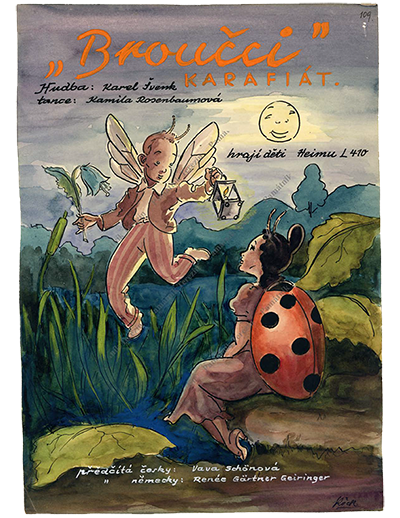
Ingber, Judith Brin "Exterminating Pests: Fireflies, Ladybugs and Children," The Holocaust: Remembrance, Respect and Resilience | Read the article
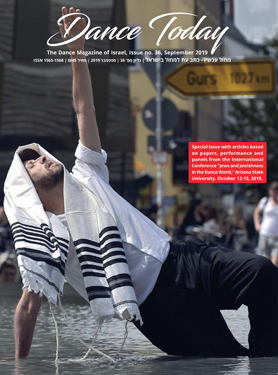
Ingber, Judith Brin and Ruth Eshel, eds. Special Issue of Mahol Akhshav [Dance Today] No. 36, September, 2019. Accessed March 17, 2020. | Read the publication
Usually Dance Today, published twice a year, appears in Hebrew but this English issue was based in the international conference “Jews and Jewishness in the Dance World” held at Arizona State University in October of 2018; the conference was conducted in English. The authors represent a wide range of outlooks about dance and about Judaism, their articles appearing in French, German, Hebrew, Spanish and English. The authors developed their articles from papers they had presented or performances or comments on panels at the conference. Many are illustrated with rare historic photographs.
______. "And They Beat Their Swords into Plowshares; Interview with Yoav Ashriel". Ruth Goodman, Danny Uziel, Yaron Meishar, eds,. Rokdim-Nirkoda Israeli Folk Dance Magazine. February, 2021. | Read the article
______. “Guest Editor’s Introduction to Mahol Akhshav (Dance Today) 36”. September, 2019. 5-6. | Read the introduction
______. “Correcting a Published Error: ‘Kamila Rosenbaumová, the Choreographer of Theresienstadt’s Broučci and Brundibár Died in Auschwitz’ and Other Quandaries”. September, 2019. 18-29. | Read the article
______. “Exhibition Commentary for Reimagining Communities through Dance”, in Program Booklet for "Jews and Jewishness in the Dance World," Arizona State University, Tempe, Arizona, October, 2018. 76-78. Accessed March 17, 2020. | Read the program
This article traces the development of Jewish communities with historical definitions and examples of traditional Jewish communities, illuminating when Jews have danced, especially because of the Talmudic dictum to dance at weddings. Generally, there are still commonly held values such as in Israeli kibbutzim, rich in communal dancing. This article accompanied, ‘Re-imagining Communities in Dance’, a large exhibit of dance photos and objets curated by Judith Brin Ingber and Naomi M. Jackson for the “Jews and Jewishness in the Dance World Conference” October 13-15, 2018.
Ingber, Judith Brin and and Jill Gellerman. "Celebrating in a Jewish Mode: Dance in Europe, the Yishuv and Israel." Rokdim-Nirkoda. #99, July, 2018. | Read the article
This article appears in the bi-lingual Hebrew/English Israeli folk dance magazine, edited by Yaron Meishar, Ruth Goodman and Danny Uziel. The authors, Judith Brin Ingber and Jill Gellerman, both taught daily dance workshops at the Yiddish Summer Weimar Festival, August 8-12, 2017.
______. "Body Image and the Dancer," Minnesota Women’s Press, August 2017. | Read the article
______. "'To the Walnut Grove' and Other Magical Places with Sara Levi-Tani" (in Hebrew), eds. Rottenberg, Henia and Dina Roginsky. Sara Levi-Tanai: Haim Shel Yetzira (A Creative Life). Tel Aviv: Resling Publishers. 2015. 213-235.
The extraordinary life of Sara Levi-Tanai, poet, musician, choreographer, company director and pioneering Yemenite-Israeli woman, appears in this book in several different chapters by several different authors. Judith Brin Ingber, who was Levi-Tanai’s assistant at Inbal Dance Company in the mid-1970s, writes about working with the Inbal founder and master choreographer. Read the English version of the chapter (Accessed March 17, 2020).
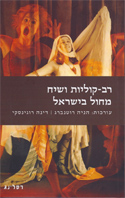
______. "Who's Right? Whose Rite? American, German or Israeli Views of Dance". Roginsky, Dina and Henia Rottenberg. Rav Kolot V’Seah Mahol BYisrael [Dance Discourse in Israel ] (in Hebrew). Resling Press, 2009. | Read the English version of the article

______. “Bravo and Mazel Tov, Batsheva at Fifty." Dance Critics Association Newsletter. Fall/winter 2014. 11-18. | Read the article
______. “Come Home Charley Patton by Ralph Lemon, a Review.” Dance Critics Association Newsletter. Spring. 2014. 14-15. | Read the article
______. “The Miriam Tradition: Teaching Embodied Torah, a review”. Nashim: A Journal of Jewish Women's Studies & Gender Issues, 2011, Vol.22(1). 210-214.
______, ed. Seeing Israeli and Jewish Dance. Detroit: Wayne State University Press. 2011.
Wayne State University Press produced Brin Ingber’s ground breaking anthology on the diversity of dance in Judaism as a luscious art book with a remarkable amount of 182 photos reproduced on glossy pages. The contributing writers (experts from Israel, Europe and the United States) reflect the diverse views of dance historians, critics, ethnographers, sociologists and dancers in their essays. Whether readers have little or much dance background, Ingber’s outlook as editor gives the book a dancerly look, achieved through attention to familiar ways of seeing.
______. "Introduction: Coming into Focus". 1-24.
Ingber, Judith Brin with Felix Fibich. “The Unwitting Gastrol: Touring the Soviet Union, France, the United States, Canada, Israel, South America, Europe and Back to Poland”. 43-57.
______. “Shorashim: The Roots of Israeli Folk Dance". 99-171.
______. "Vilified or Glorified? Nazi Versus Zionist Views of the Jewish Body". 251-281.
______, ed. “Jewish Dance”. Jewish Folklore and Ethnology Review, vol. 20 #1-2, 2000.
The 14 essays in this journal collection also include two articles by Brin Ingber, the editor:
______. “Felix Fibich: Selections from an Oral History”. 78-87.
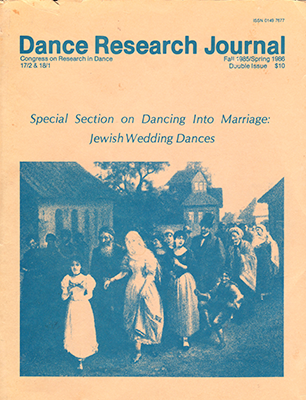
______, ed. "Dancing into Marriage: Jewish Wedding Dances," Special section. Dance Research Journal, Sally Banes, ed., 17/18 (Fall 1985/ Spring 1986). 51-87.
These six articles developed from presentations at the Congress on Research in Dance (CORD) regional conference called Dancing into Marriage: Jewish Wedding Dances, convened at the Minneapolis Jewish Community Center in June of 1982. In addition to hearing presentations, those attending learned wedding dances of different Jewish communities in the Diaspora through workshops demonstrating Yemenite Jewish wedding dances, Eastern European wedding dances and Persian Jewish wedding dances.
The articles in the special issue of the CORD Dance Research Journal include the editor’s:
______. “Introduction,” in Judith Brin Ingber, ed., "Dancing into Marriage: Jewish Wedding Dances," Special section. Dance Research Journal 17/18 (Fall 1985/ Spring 1986). 51-55.
______. “The Wedding Dances at Kibbutz Ramat Yohanan: The Original Experiments of Lea Bergstein”; ed., Brin Ingber, Judith, Special section. Dance Research Journal 17/18 (Fall 1985/ Spring 1986). 81-87.

______. "Unlikely Pair Brings Jewish Dance to Poland," Forward, August 22, 2003, about Jacek Luminski and Zvi Gotheiner in Poland.
______. "A Modern-Day Miriam, Dancer and Choreographer Yehudit Arnon Basks in Long Overdue Recognition". Forward,October 17, 2003.
______. "A Legend Dances through the 'Rusty' Years" about Felix Fibich. Forward, December 19, 2003.
______. Special on Ruth Goodman and the Annual Israel Folk Dance Festival. Forward, March 2003.
______. “Contemporary American Dance". Encyclopedia Judaica. Jerusalem: Keter, 2010. 409-416. This second edition of the Encyclopedia Judaica, includes many expanded articles with a new focus on many Jewish women previously omitted from the original encyclopedia. Brin Ingber’s section is within these pages.
______. “Pearl Lang,” Encyclopedia Judaica. Jerusalem: Keter, 2010.
______. “Pearl Lang and the Choreography of Prayer". Jewish Week, March 13, 2009. 42. This obituary about the important American Jewish choreographer Pearl Lang discusses not only her works, but her influences and experiences. | Read the obituary

______. "If I Survive". eds., Jackson, M. Naomi and Toni Shapiro-Phim, Dignity in Motion-Dance, Human Rights, and Social Justice. Scarecrow Press, 2008. 342-344.
This book includes Judith Brin Ingber's chapter about Yehudit Arnon based on interviews held January 5-6, 2002 at Israel’s Kibbutz Ga’aton, in the Karmiel Festival July 9, 2003 and by telephone Aug. 17, 21, 2003 about Arnon’s life which included surviving Auschwitz-Birkenau; her return to Hungary; reaching Israel and founding the pan-kibbutzim Kibbutz Contemporary Dance Company at Kibbutz Ga'aton.
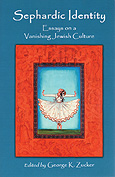
______. "Is Sephardic Dance Too Sexy?". George Zucker, ed., Sephardic Identity: Essays on a Vanishing Jewish Culture, Jefferson, N.C.: McFarland & Co. 2005. 167-179.
Brin Ingber’s essay is based on her own experiences performing in the troupe Voices of Sepharad throughout the US, Canada and Poland, augmented by her field research about dance in Sephardic communities.

These essays in the Jewish Women’s Encyclopedia reflect Brin Ingber’s research in both the United States and in Israel.
______. “On Jewish Women Dancers in the United States.” The Encycopedia of Jewish Women. Accessed Mar. 20, 2020. | Read the article
______. “Yehudit Arnon (1926-2016)”. The Encycopedia of Jewish Women. Accessed Mar. 20, 2020. | Read the article
______. “Yardena Cohen (1910-2012)”. The Encycopedia of Jewish Women. Accessed Mar. 20, 2020. | Read the article
______. “Sulamif (Shulamith) Messerer (1908-2004)”. The Encycopedia of Jewish Women. Accessed Mar. 20, 2020. | Read the article
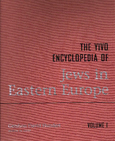
______. “Theatrical Dance,” The YIVO Encyclopedia of Jews in Eastern Europe, New Haven: Yale University Press and YIVO Institute for Jewish Research. 2008, 391-392.
The two-volume encyclopedia concentrating on Jewish culture of Eastern Europe includes Brin Ingber’s article on Theatrical Dance with emphasis on the biography of Felix Fibich, dancer in the Yiddish Theatre trained in Warsaw’s inter-war period and Judith Berg who was trained in Germany in the expressionist modern dance movement, opened an approved Polish government studio in Warsaw, and choreographed for Yiddish theatre, had her own shows, and also choreographed for the important Yiddish film, “The Dybbuk” in 1937.
______. “Contemporary American Dance”. Encyclopaedia Judaica. 2nd Edition. Vol. 12. 2007. 414-415.
“Pearl Lang.” Encyclopaedia Judaica. 2nd Edition.Vol. 12. 2007. 479.
______. "Teacher's wisdom, interview with Bonnie Mathis.” Dance Magazine. July 2004, vol. 78, no. 7, 48-49.

______. “Choreographers Evening and How It All Started.” Minnesota Dance, Newsletter of the MN Dance Alliance. May-August 2001, vol XXVIII, No. 3. | Read the article
______. “Art Performs Life: Merce Cunningham/Meredith Monk/Bill T. Jones.” Minnesota Dance. Sept-Oct 1998, Vol. XXIV, No.4.
______. “Portrait of Barbara Barker.” Minnesota Dance. Jan/Feb 1988, Vol. iX, No. 3.
______. “Philip Bither Succeeds John Killacky at The Walker.” Minnesota Dance. March/April 1997. Vol. XXIII, No. 4. 1;10-11.
A portrait of the new curator of performing arts at the Walker Art Museum, Minneapolis.
______. “Mary Lee Hardenbergh Goes on Peace-Saving Mission.” Minnesota Dance. Sept/Oct 1996, Vol. XXIII, No. 1.
______. “Remembering Loyce Houlton,” Minnesota Dance. May/June/July/August. 1995. Vol. XXI. No. 5. 1;4-5.
A portrait of the choreographer, founder, company director of the Minnesota Dance Theater who died on March 14, 1995, two months before the Minnesota Dance Alliance’s spring-summer publication.
______. “Determination; Alice Bloch and Megan McGrath Bornes” Minnesota Dance. January/February 1993. Vol. XIV. No. 3., 11. Dancers who have survived cancer.
______. "Pilates and Marjorie". Minnesota Dance. September/October 1994. Vol. XXI. No.1.
Marjorie Thompson, one of the teachers at Ballet Arts Minnesota, received the prestigious Jerome Foundation/Dayton Hudson/General MillsTravel grant to become certified in the Pilates exercise system in New York. The article describes Thompson's dance background, a brief history of the Pilates system, and how Thompson will be the first to teach Pilates to Minneapolis dancers as a complement to their dance studies.
______. “Entertainment or Art?”. Minnesota Dance. January/February 1993. Vol. XIV. No. 3. 1; 7.
Portrait of the choreographer, teacher, Robert Moulton who was a beloved professor in the University of Minnesota’s Department of Theatre Arts and Dance as well as choreographer for many productions at the University, the Stage Coach theater and the Guthrie Theater.
______. Book Review of the “Prodigal Son, Dancing for Balanchine in a World of Pain and Magic” by Edward Villella. 1992.
______. “Gertrude Lippincott, ‘Righto’”. Minnesota Dance. January/February 1990. Vol. XI. No.3. 1;6-7. This article profiles the first modern dancer in Minneapolis who became a master teacher throughout the US.
______. “David Voss, A Dancer Who’s Made a Difference”. Minnesota Dance. January/February 1990. Vol. XI. No.3, 1-6.
This article profiles one of the first dancers to work with Loyce Houlton’s Minnesota Dance Theater, who became a beloved teacher and music expert for the dance program of the Dept. of Theater Arts and Dance at the University of MN.
“Nancy Hauser”. Minnesota Dance. September/October, 1990. Vol. XI. No. 1, 1;15.
This article features the inspiring modern dancer Hauser, who left the Hanya Holm company of New York and helped establish modern dance in Minneapolis and St. Paul as teacher, choreographer and company director of the Nancy Hauser Dance Company.
______. “George Amberg”. American Biography, New York and Oxford: Oxford University Press, 1998. 400-401.
______. “Fred Berk”. American Biography, New York and Oxford: Oxford University Press, 1998. 645-646.
______. “Lillian Shapero”. American Biography, New York and Oxford: Oxford University Press, 1998. 713-714.
______. "Ze'eva Cohen: Dancer, Choreographer, Educator," International Dictionary of Modern Dance, Detroit: St. James Press, 1998.
This biographic article on Israeli-American choreographer and creator of the Princeton University dance program, Ze'eva Cohen also lists Cohen's choreographic works.135-138.
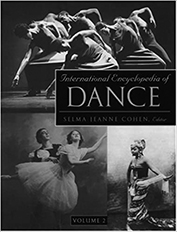
Ingber, Judith Brin and Giora Manor. "Israel: An Overview," International Encyclopedia of Dance. 6 vols., edited by Selma Jeanne Cohen. New York and Oxford: Oxford University Press. 1998. 526-535.
______. “Fred Berk.” International Encyclopedia of Dance. 6 vols., edited by Selma Jeanne Cohen, New York and Oxford: Oxford University Press, 1998. 431-432.
______. “Sara Levi-Tanai.” International Encyclopedia of Dance. 6 vols., edited by Selma Jeanne Cohen, New York and Oxford: Oxford University Press, 1998. 155-156.
______. “Gurit Kadman”. International Encyclopedia of Dance. 6 vols., edited by Selma Jeanne Cohen, New York and Oxford: Oxford University Press, 1998. 641.
______. "Dance," The Oxford Dictionary of the Jewish Religion. Editors R.J. Zwi Werblowsky and Geoffrey Wigoder. New York and Oxford: Oxford University Press, 1997. 185-186.
______. "Jewish American Women Dancers," 1997, edited by Paula E. Hyman and Deborah Dash Moore.
This extensive article discusses choreographers, performers and critics in American theater dance and their intersection with Jewish culture. Jewish Women in America, An Historical Encyclopedia, 2 vols. New York and London: Routledge.
______. "The Priestesses, Yardena Cohen and Sara Levi-Tanai." Dance Chronicle: 18, #3 (Winter 1995). 39-58.
This is not only a biography of Yardena Cohen and Sara Levi-Tanai, but ties them to the ancient Temple of Solomon with their priestly inheritance indicated by their last names, Levi and Cohen
______. “Sephardic Dance in Minnesota? Some Anecdotes about Dance and Research”. Levy, Isaac Jack, ed., Sephardic Folklore, Exile and Homecoming in Jewish Folklore and Ethnology Review, vol. 15, No.2, 1993.74-78.
______. "Jewish Dancers in America," Jewish-American History and Culture, An Encyclopedia. Editors Jack Fischel and Sanford Pisker. New York and London: Garland, 1992. This article includes information on Jewish dancers in American ballet, American modern dance, and Yiddish theater.
______. "As Israel was evolving, so was its Inbal Dance Troupe”. Minneapolis Star Tribune, Sunday, April 17, 1988.
______. "Fred Berk: The Metamorphosis of a European Dancer, 1939-1949." Dance Chronicle 7.1, 1984, 1-32.
This chapter which later appeared in the authorized biography of Fred Berk (see Victory Dances: The Story of Fred Berk, A Modern Day Jewish Dancing Master) explains how Berk fled the Nazis and re-established himself in New York as a choreographer and teacher.
______. “Dancing Into Marriage”. Arabesque Magazine. Volume VIII, No. IV. November-December, 1982. 8-9, 20-21. | Read the article
______. "Gurit Kadman: The Diaghilev of Israeli Folk Dance." Arabesque Magazine, Volume VII, No. II, July-August. |
Read the article
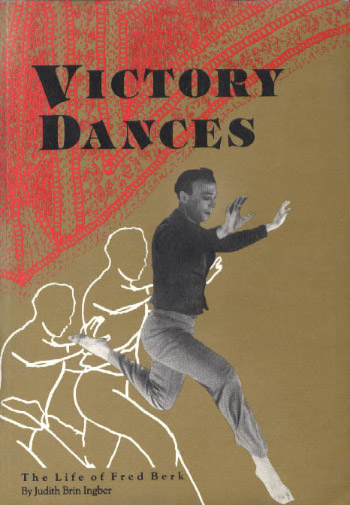
______. Victory Dances: The Story of Fred Berk, A Modern Day Jewish Dancing Master. Tel Aviv: Israel Dance Library, 1985.
This duo-language text in both Hebrew and in English, published in Tel Aviv by The Israel Dance Library, 1985 is the authorized biography of Fred Berk. It is the exciting story of Berk's life; began his dance career in Vienna with Gertrud Kraus, escaped the Nazis and eventually created the Jewish Dance Division at the 92Y in New York City. He was seminal to the introduction of important Israeli folk dance creators and Israeli folk dance in the United States.
______. “Improvisation: Examined and Practiced at the American Dance Guilde Convention.” Israel Dance. 1980, Tel Aviv, June 1981.
______. “Sources on Jewish Dance: A Selected Bibliography (1901-1981)” with Jill Gellerman, Jewish Folklore and Ethnology Newsletter, 24-28, 1981.
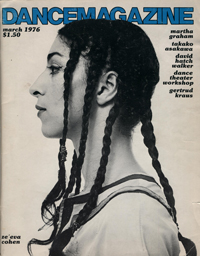
______. "The Gamin Speaks: Conversations with Gertrud Kraus." Dance Magazine, March 1976, 45-50.
This article is a fully illustrated portrayal of Gertrud Kraus, Viennese modern dancer who was prescient about the doom of Jewish life in Europe, moving to Tel Aviv in 1935. One of Israel's original founders of modern dance, she performed, choreographed, and then taught and sculpted until her death in 1977. Ze'eva Cohen, featured on the cover (soloist, famous Anna Sokolow interpreter and founder of Princeton University's Dance Program) grew up in Gertrud Kraus's Tel Aviv studio.
______. “The Russian Ballerina and the Yemenites.” Hora, Fall 1976.
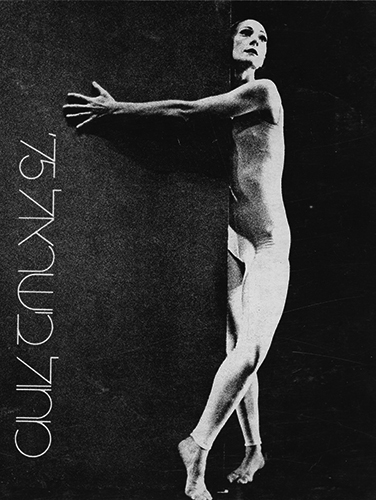
Ingber, Judith Brin and Giora Manor, ed., The Israel Dance Annual, Tel Aviv: 1975-1980.
This annual magazine co-founded by Manor and Brin Ingber, after 1980 was edited by Ruth Eshel. It became Israel Dance and then Dance Today. Accessed March 17, 2020. | Go to archive
______. “Dance Images and the Zohar”. Israel Dance Annual 1986. 6-11.
______. “Fred Berk-The Life of a Jewish Dancer”. Israel Dance Annual 1983. 17-24.
______. “What is American About American Modern Dance?”. Israel Dance Annual 1982. June 1982. 5-8
______. “Improvisation--Examined and Practiced at the American Dance Guild Convention. Israel Dance Annual 1981. 19-20.
______. “The Famous and the Beautiful.” (In Hebrew) Israel Dance Annual 1977, January 1978. 17-19.
______. “Ballet Finally Moves Front.” Israel Dance Annual 1975, February 1976, 11-14.
______. “The Russian Ballerina and the Yemenites” Israel Dance Annual 1975. February 1976. 19.
______. “Honoring the Most Modern of Dancers”, Tarbut, America-Israel Cultural Foundation, 1974, 3-6.
______. “Our Spirit Has Only Deepened”. HORA, ed. By Fred Berk, Jan., 1974. 2-3.
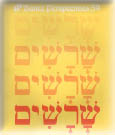
______. "Shorashim: The Roots of Israeli Folk Dance". Selma Jeanne Cohen, ed., Dance Perspectives 59, Autumn 1974, 1-60.
This richly illustrated monograph with over 70 historic photos was one of the influential dance quarterlies edited and published by Selma Jeanne Cohen. The monograph is based on interviews of Israel's decisive folk dance creators plus the major creators of Israeli theatre dance. The interviews reveal the pioneering dance work of these dance artists in the 1930s and 1940s. See an updated version in Brin Ingber’s Seeing Israeli and Jewish Dance. Detroit" Wayne State University Press. 2011.
______. “Preview: Inbal Dance Theatre”. Dance Magazine, Nov, 1973, 67-69.
______. The ‘Dancing Playground; Molly Lynn”. Dance Magazine, July 1972, 22.
______. News columns from Israel. Dance Magazine. 1972-1977.
Brin, Judy. “In Memoriam: George Amberg”. Ballet Review, Vol. 4, #1, 1970, 73-75.
______. “Review of Jazz as Dance”. Dance Magazine. March, 1969. 88-89.
______. “Calendar of Summer International Dance Events.” Dance Magazine. May 1968. 36-44; 83-84.
______. “Judy at the Electric Circus”, Dance Magazine. October, 1967. 56-57. | Read the article
______. “Sultan by the Sea”, Dance Magazine, August 1967, 24-25.
______. “Moulton talks of ‘unique’ graduate theater-dance class”. Minnesota Daily, March, 9, 1966.
______. “Don’t Splinter the Dance,” Dance Magazine. August, 1965. (See also Reprint in Minnesota Dance Alliance Newsletter. Mar. April, 1993). | Read the article
Articles about or interviews with Judith Brin Ingber
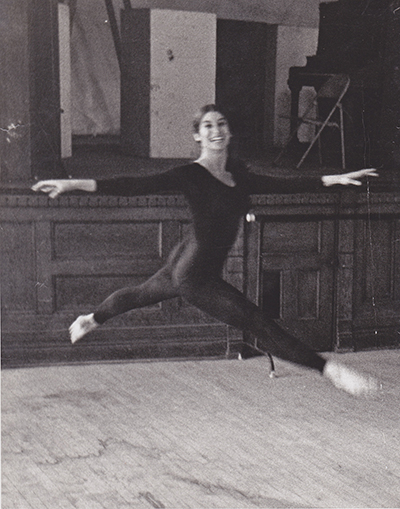
Judith Brin Ingber teaching for Minnesota Dance Theatre in the early 1970s in Minneapolis.
Leaf, Justin. "Memories of Loyce: Gifts Given and Received" Interview on occasion of 25th anniversary of death of Loyce Houlton, Minnesota Dance Theatre. February 26, 2020 | Read the article
Kosstrin, Hannah. Forthcoming Biographical article on Judith Brin Ingber. Jewish Women’s Archives Encyclopedia on Jewish Women. | Go to site
Traiger, Lisa. “Gaga for Israeli Dance”, Moment Magazine, September-October, 2019. Accessed March 10, 2020. | Read the article
Lisa Traiger’s comprehensive dance piece on dance in Israel includes interview comments by Brin Ingber.
Janczewski, Matthew. Studio Stories Podcast: Interview with Judith Brin Ingber as an elder in the Minnesota Dance Community. Episode 9. July 2nd, 2020 | Go to Podcast
Becker, Reuven. “The Mizinke Dance: Tradition, Folklore or Other?” Jewish Action Magazine. Accessed June 10, 2020. | Read the article
Judith is featured as a Jewish dance expert in the news article about the Mizinke Dance, a traditional wedding dance.
Kosstrin, Hannah. “Seeing Israeli and Jewish Dance, A Review”. Dance Research Journal. April 2015, Vol.47/1.111-115.
Gluck, Rena. Interview (in Hebrew) about Brin Ingber’s Israeli dance experiences. Oral History. Dance Library of Israel. Dec. 2017. | Watch Video
______. Interview with Israeli choreographer Sharon Eyal. November 2, 2016. | Watch Video
Sharon Eyal was in Minneapolis to stage one of her works for the James Sewell Ballet. From the Rimon MN Jewish Arts Council program “Talking the Walk: New Dance in Israel.”
Charnow, Sally. “Victory Dances: The Life of Fred Berk. Dance Research Journal. Vol.22-1 Spring, 1990. 35-38.
Draegin, Lois. “Jewish Dance Vaults Centuries and Styles”. New York Times. September 14, 1986.
The news article reports on the “Jews and Judaism in Dance: Reflections and Celebrations” including an interview by Brin Ingber, keynote speaker for the conference.
Kisselgoff, Anna. "One Man’s Contribution to the History of Modern Dance". Sunday Dance View. The New York Times. Novemeber 24, 1985. | Read the article
This full page feature highlighted Brin Ingber’s biography Victory Dances; The Story of Fred Berk, A Modern Day Jewish Dancing Master.
Sowden, Dora. “Batsheva Goes Independent”. Jerusalem Post. March 17, 1975.
Includes information on program choreographed by Judith Brin Ingber.
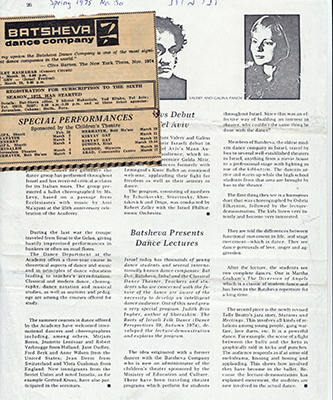
Judith's Batsheva program
“Dance Notes; Batsheva Presents Dance Lectures” Tarbut. Spring 1975. No. 30.
This article explains the lecture-demonstration developed by Judith Brin Ingber for the Batsheva Dance Company.
Additional information about Judith
The Shalvi/Hyman Jewish Women Encyclopedia (2021) includes a bio of Judith. Read Judith's bio here
Judith Ingber Papers - University of Minnesota View it here
Judith’s collection in the Performing Arts Archives of the University of Minnesota.

